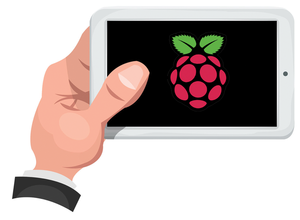Touchscreen Pi
Display T. Box combines a Raspberry Pi 2 with an integrated touchscreen. The result is a complete mini-PC that can be used as soon as you supply power.

Lead Image © Benoit Chartron, 123RF.com
Display T. Box combines a Raspberry Pi 2 with an integrated touchscreen. The result is a complete mini-PC that can be used as soon as you supply power.
Display T. Box
Just unpack the device and start using it: This approach typically works when you buy something like a television, radio, or mixer – but not a Raspberry Pi. Usually, the Pi user has to purchase a power supply and cover, assemble everything, prepare a memory card with an operating system, make sure you have a TV or monitor with an HDMI connection, and then make sure a keyboard is connected. The Display T. Box [1] from pi3g might not be as easy to use as a mixer, but the added convenience of an integrated touchscreen allows the user to implement many ideas much more easily.
With a price tag of about EUR100, the Display T. Box consists of a Raspberry Pi 2 (RPi2) with a 2.8-inch color touch display mounted in the case. The display has a resolution of 320x240 pixels and, of course, the touch function. Additionally, it has a 16GB memory card with a current version of Raspbian, which includes an adapted kernel and tools for calibrating the touchscreen. Pi3g provides a package source to keep the package compatible after kernel updates. In the future, this package source will deliver applications tailored to the display. (See the "Delivery Contents" box.)
[...]
Pages: 4
Price $15.99
(incl. VAT)